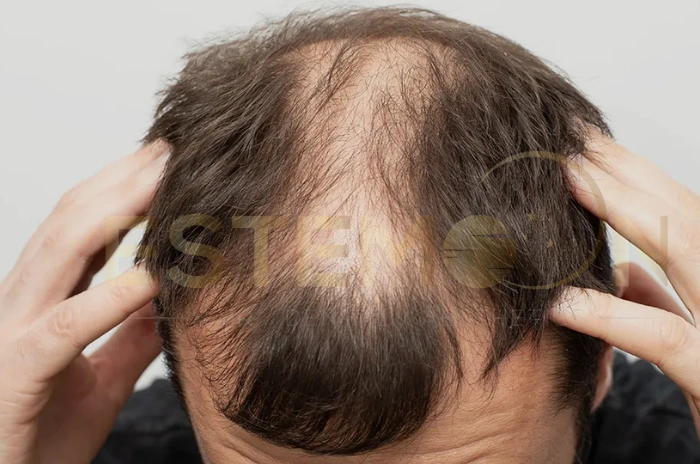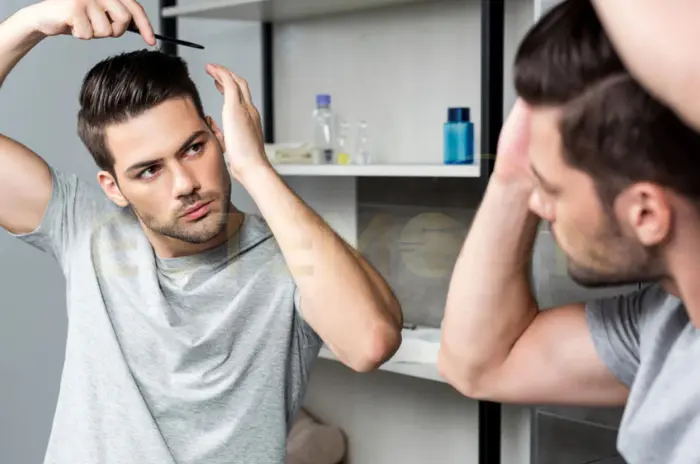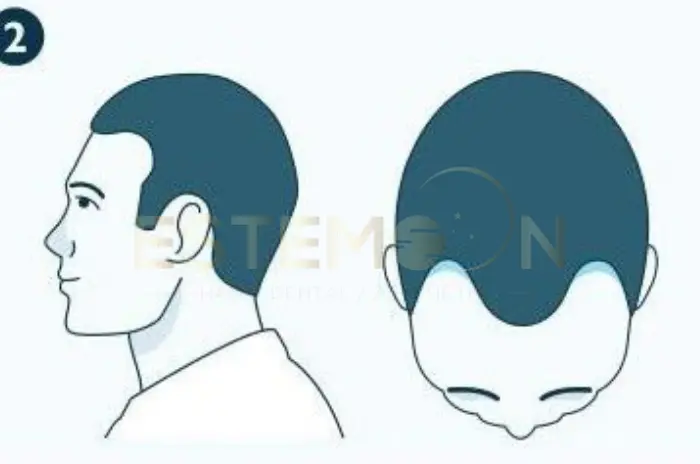When facing Norwood Scale 3 hair loss, understanding your treatment options becomes crucial for making informed decisions about your hair restoration journey. This comprehensive guide explores both surgical and non-surgical approaches to address Norwood 3 hair loss, helping you choose the most suitable path forward.
Stage 3 baldness represents a significant milestone in male pattern baldness, where the hairline recession becomes more pronounced and may begin affecting your confidence. The good news is that numerous effective treatments are available, ranging from FDA-approved medications to advanced hair transplant procedures.
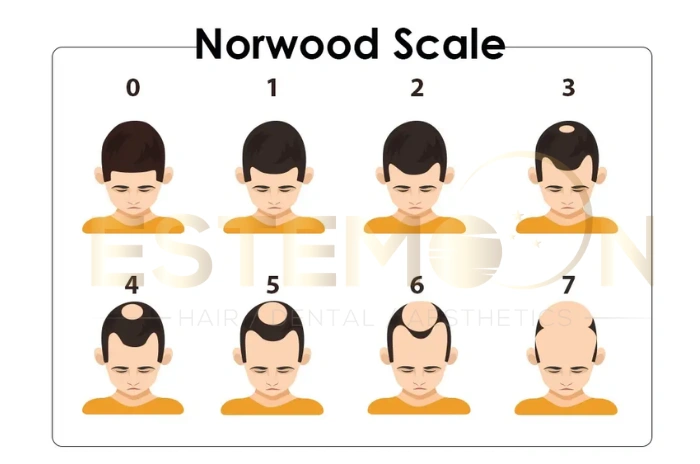
Understanding Norwood Stage 3 Hair Loss
Norwood 3 hair loss is characterized by a distinct M-shaped hairline pattern, with noticeable recession at the temples and a deepening of the frontal hairline. At this stage, the hair loss extends approximately 2-3 centimeters beyond the original hairline, creating a more pronounced widow’s peak or complete frontal recession.
The Norwood 3 vertex variation includes additional thinning at the crown area, making it a more complex condition that requires comprehensive treatment planning. This pattern affects approximately 25% of men by age 30 and nearly 50% by age 50.
Key Characteristics of Norwood Stage 3
- Temple recession extending 2-3 cm from the original hairline
- Formation of an M-shaped pattern or widow’s peak
- Possible crown thinning in the vertex variant
- Miniaturization of existing hair follicles
- Increased scalp visibility in affected areas
The progression typically occurs gradually over several years, giving patients ample time to consider their treatment options. Early intervention often yields better results, making Norwood 3 treatment timing crucial for optimal outcomes.
Recognizing the Signs of a Norwood 3 Hairline
Identifying Norwood 3 hair loss early allows for more effective treatment interventions. The primary indicators include a receding hairline that forms a distinct M-shape, with the deepest points of recession located at the temples.
Unlike earlier stages, Stage 3 baldness shows clear definition between the receded areas and the remaining hairline. The frontal hairline may appear uneven, with some areas showing complete hair loss while others maintain partial coverage.
Visual Indicators to Monitor
- Increased forehead exposure during styling
- Difficulty covering recession with existing hair
- Noticeable scalp visibility at the temples
- Changes in hair texture and density
- Formation of distinct hairline angles
Many patients first notice changes when styling their hair becomes challenging or when photographs reveal the extent of their recession. Regular monitoring with consistent lighting and angles helps track progression accurately.
Choosing the Right Norwood 3 Solution
Selecting the best treatment for Norwood 3 depends on various factors including age, lifestyle, budget, and personal preferences. Both surgical and non-surgical options offer distinct advantages for different patient profiles.
Norwood 3 non-surgical treatment options provide excellent results for patients seeking less invasive approaches or those not ready for surgical intervention. These treatments work best when started early and maintained consistently.
Non-Surgical Treatment Options
Finasteride represents the gold standard for medical hair loss treatment, showing effectiveness in 80-90% of patients with Norwood 3 hair loss. This oral medication blocks DHT production, the primary hormone responsible for male pattern baldness.
Minoxidil application directly to the scalp stimulates blood flow and can help maintain existing hair while promoting new growth. The 5% foam formulation typically provides better results than lower concentrations.
Low-Level Laser Therapy (LLLT) devices offer a drug-free option that can complement medical treatments. Clinical studies show modest improvements in hair density and thickness when used consistently.
Surgical Solutions
Norwood 3 hair transplant procedures offer permanent solutions with natural-looking results. FUE for Norwood 3 (Follicular Unit Extraction) provides minimal scarring and faster recovery compared to traditional strip methods.
The transplant approach allows for precise hairline design and can address both temple recession and crown thinning simultaneously. Modern techniques ensure high graft survival rates and natural hair growth patterns.
How Many Grafts Are Needed for Norwood 3
How many grafts Norwood 3 patients require depends on several factors including the extent of recession, desired density, and hair characteristics. Most patients need between 1,500 to 2,500 grafts for optimal coverage.
Norwood 3 graft needs typically break down as follows:
- Temple restoration: 800-1,200 grafts
- Frontal hairline: 600-1,000 grafts
- Crown area (if affected): 500-800 grafts
The surgeon’s assessment considers hair caliber, curl pattern, and color contrast with skin tone. Patients with fine hair may require more grafts to achieve similar visual density compared to those with coarse hair.
Factors Affecting Graft Requirements
| Factor | Impact on Graft Count |
|---|---|
| Hair caliber | Coarse hair requires fewer grafts |
| Hair color | Dark hair on light skin needs more coverage |
| Curl pattern | Wavy hair provides better coverage |
| Age | Younger patients may need future procedures |
| Progression rate | Aggressive loss requires strategic planning |
Experienced surgeons use digital imaging and density measurements to provide accurate graft estimates during consultation. This planning ensures adequate coverage while preserving donor hair for potential future procedures.
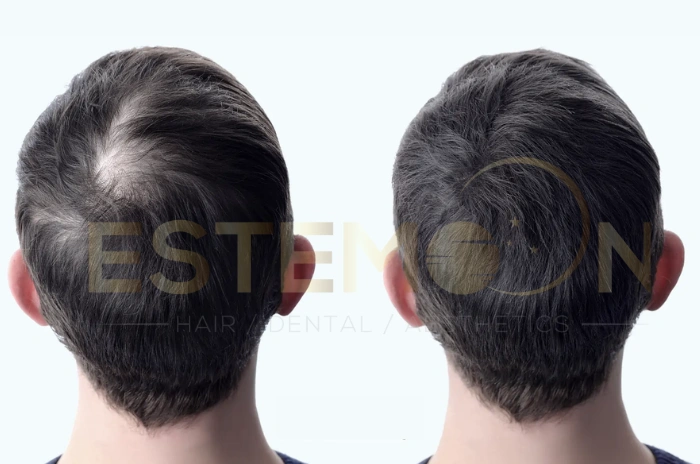
Timeline for Results After Norwood 3 Treatment
Norwood 3 results timelines vary significantly between treatment modalities. Non-surgical treatments typically show initial improvements within 3-6 months, with peak results occurring at 12-18 months of consistent use.
Norwood 3 FUE results follow a different timeline, with transplanted hair initially shedding within 2-4 weeks before entering a resting phase. New growth typically begins around month 3, with substantial coverage visible by months 8-12.
Treatment Timeline Comparison
Non-Surgical Treatments:
- Month 1-3: Stabilization of hair loss
- Month 3-6: Initial regrowth visible
- Month 6-12: Continued improvement
- Month 12+: Peak results achieved
Hair Transplant Results:
- Week 1-2: Initial healing phase
- Week 2-4: Transplanted hair sheds
- Month 3-4: New growth begins
- Month 6-8: Noticeable coverage
- Month 12-15: Final results visible
Patience remains crucial throughout the treatment process, as Norwood 3 before and after comparisons show the most dramatic improvements occur during the second year of treatment.
Expected Results from Norwood 3 Treatment
Best treatment for Norwood 3 outcomes depend on realistic expectations and proper treatment selection. Non-surgical approaches typically maintain existing hair and provide modest regrowth, while transplant procedures offer more dramatic transformations.
Successful Norwood 3 treatment can restore a youthful hairline appearance and significantly improve overall facial aesthetics. The key lies in choosing treatments that align with individual goals and lifestyle requirements.
Success Metrics for Different Treatments
Medical therapy success is measured by:
- Halted or slowed progression
- Increased hair density
- Improved hair quality
- Enhanced styling options
Transplant success includes:
- Natural hairline restoration
- Age-appropriate design
- Adequate density coverage
- Long-term stability
Patient satisfaction rates exceed 90% for both treatment categories when performed by experienced practitioners. The combination of realistic expectations and proper technique selection contributes significantly to positive outcomes.
FAQs About Norwood 3 non surgical treatments and transplant guide
How long until I see Norwood 3 treatment results?
Non-surgical treatments show initial results in 3-6 months, while hair transplants require 8-12 months for substantial coverage to become visible.
What non-surgical options are best for Norwood 3?
Finasteride and minoxidil combination therapy provides the most effective non-surgical approach for Norwood 3 hair loss treatment.
How many grafts are typically needed for Norwood 3?
Most Norwood 3 patients require 1,500-2,500 grafts depending on the extent of recession and desired density coverage.
When should I choose transplant over non-surgical care?
Consider transplant when non-surgical treatments fail to provide adequate results or when seeking permanent restoration of the Norwood 3 hairline look.

